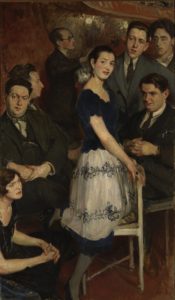Milhaud, Le Boeuf sur le Toit

The bull on the roof? Now there’s one problem we never had to deal with back on the ranch. Our bulls stayed peacefully (mostly) in the pasture, and none of our neighbors (who loved to tell stories) ever mentioned seeing a bull in such a predicament.
But Darius Milhaud (1892-1974) went to Brazil toward the end of WWI where he served as secretary to the French Ambassador. There he heard about a bull on the roof in a folk song. He took the idea for a farcical ballet, and it became popular among the avant garde gathered in post-war Paris cabarets. Think of names like Picasso, Stravinsky, Hemingway, and Gertrude Stein. Or maybe you saw the 2011 Woody Allen film Midnight in Paris depicting the artistic luminaries of that time and place.
Artists of all types rubbed shoulders and drew inspiration from each other, but among the musicians, a group known as Les six stands out as the most significant movement. Formed primarily through the efforts of the writer Jean Cocteau, it included Milhaud, Georges Auric, Louis Durey, Arthur Honegger, Francis Poulenc, and Germaine Tailleferre. They stated the aim of breaking away from the Germanic influences of Wagner et al as well as the impressionism of Debussy.
The favorite cabaret for Les six and Cocteau was La Gaya. In 1922, the owner relocated a few blocks away and named his new establishment Le Boeuf sur le Toit after Milhaud’s ballet. It remains to this day an upscale restaurant in Paris, although it has moved several times.
Milhaud’s compositions draw heavily on Brazlian influences and jazz.



